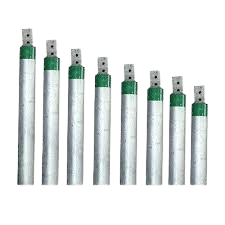
Table of Contents
ToggleCHEMICAL EARTHING
Chemical Earthing Electrode: Ensuring Safety and Efficiency in Electrical Systems
In the realm of electrical engineering, the concept of chemical earthing plays a crucial role in ensuring the safety and efficiency of electrical systems. This article delves into the fundamentals of chemical earthing, exploring its significance, components, installation process, and benefits.
The Importance of Chemical Earthing
When it comes to electrical installations, one cannot underestimate the importance of proper earthing. Electrical earthing, also known as grounding, involves connecting electrical systems to the earth in order to facilitate the safe dissipation of fault currents. Chemical earthing, a specialized form of earthing, is designed to enhance the conductivity of the soil and reduce the resistance to earth, thereby providing a reliable path for fault currents to flow.
Advantages of Chemical Earthing Electrode
- Lower grounding resistance, ensuring faster dissipation of fault currents
- Improved safety for both equipment and personnel
- Enhanced protection against electrical surges and lightning strikes
Components of Chemical Earthing
A typical chemical earthing system comprises several essential components that work together to create an effective path to the ground.
1. Copper Bonded Electrodes
The main component of a chemical earthing system is the copper bonded electrode. These electrodes are buried in the ground and are responsible for establishing a low-resistance connection with the earth.
2. Conductive Earth Enhancing Compound
To further improve the conductivity of the soil surrounding the electrode, a conductive earth enhancing compound is used. This compound helps reduce the soil resistivity and ensures a reliable grounding system.
3. Salt and Water
In some cases, a mixture of salt and water is used to enhance the conductivity of the soil and maintain a low resistance connection.
Installation Process
The installation of a chemical earthing system involves several key steps to ensure its effectiveness and reliability.
1. Site Selection
Choosing the right location for the copper bonded electrode is crucial for the performance of the earthing system. The soil at the selected site should have low resistivity to enable efficient dissipation of fault currents.
2. Electrode Installation
Once the site is selected, the copper electrode is buried in the ground to the required depth. Proper installation techniques must be followed to ensure a secure connection with the earth.
Backfilling and Maintenance
After the electrode is installed, the surrounding soil is backfilled and compacted to maintain good contact between the electrode and the earth. Regular maintenance and testing are essential to ensure the integrity of the earthing system.
Conclusion
In conclusion, chemical earthing is a critical aspect of electrical installations, providing a safe and efficient means of dissipating fault currents. By understanding the components, installation process, and benefits of chemical earthing, electrical engineers and technicians can ensure the reliability and safety of electrical systems. Embracing the principles of chemical earthing is essential in today’s technologically advanced world to mitigate the risks associated with electrical faults and ensure the smooth operation of electrical systems.
“Proper earthing is the backbone of electrical safety.” For this you can trust Arete Powertech. We are a leading manufacturer of Earthing Accessory under the brand name “Arete Powertech Pvt. Ltd.”, established in 2008. We manufacture Copper Bonded Earthing Electrodes, Copper Bonded Earthing Rods, Copper chemical earthing electrodes, GI chemical earthing electrodes, Chemical Earthing ESE Lightning Arresters, Lightning Conductors System, Conventional Lightning protection systems, and Lightning Strike Counters.
